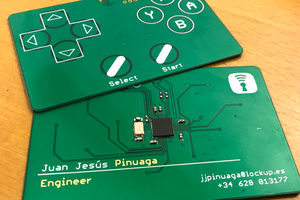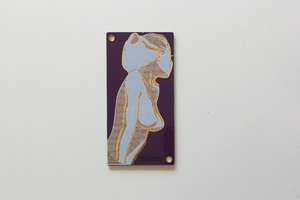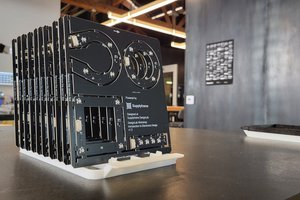It’s almost obligatory for an EE engineer to make a PCB business card. They cost the same as paper ones in bulk, 0.4 mm thickness is available, and you can give a useful product to someone. But make it personal.
I’m an engineer and a teacher. I love to teach and help. It would be nice if people could use it over and over again! PCB rulers are useful, but too long. The other feature of the common PCB ruler is the pad size. When I was a young engineerling, I didn’t know what 0603 really means. I know the dimensions, but if you are placing them in a CAD tool, zoom can trick you! I needed some reference. So one of the features is the reference on the back.
The other common problem is the copper - how much amps can a trace or cable safely conduct? The IPC and national codes helped with that. Also added an AWG/mm2 chart because it’s useful to have that.
I never had a problem with drill and pad sizes, but I asked for “beginner problems” and this one was one of them.
Last but not least: I asked a lot of guys, what advice they would give, the best ones are mentioned.
And get to the front side!
A cheat sheet is nice and useful, but it’s almost the same as the PCB ruler. Let’s make it interesting! I just finished the first order of my first revision, when ST Micro announced the C0 series - dirt cheap Cortex M0+. The F0 series isn’t bad, but keep the cost down and newer MCUs are usually better in many ways, so this new revision includes an STM32C011 microcontroller. I added a pin header so you can use it as a devkit, or utilize the integrated shift registers to drive the 7-segment display. The demo app is a simple desk thermometer, and it gets its power from USB-C! (how modern)
 TDG (Béla)
TDG (Béla)

 ndGarage
ndGarage
 Geek Club
Geek Club
 Giovanni
Giovanni